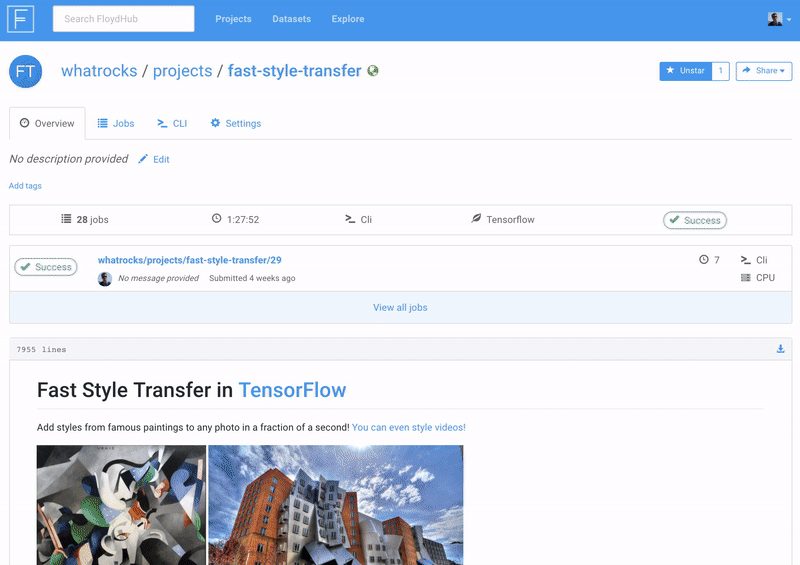Hello, README files

We're introducing a new feature to help you explore projects and share your work on FloydHub that you may already recognize - README files.
Starting today, whenever you include a README file in your project's code directory, FloydHub will detect and display the README from your latest job on your project's overview page.

In fact, if you've already uploaded a README file along with one of your existing projects, then you should already be able to see your project README in action.
Playing nice with others
We're focused on building a community of collaboration and learning at FloydHub. With project README files, we're excited for you to help other people understand:
- why your project is useful
- what they can do with your project
- how they can run your project
This last bit is key for FloydHub projects - you'll want to include specific details on how to run your project using the floyd run command. If you're lucky - and using GitHub - you may already have a README file for your project. We recommend adding FloydHub-specific instructions to this existing file.
For example, a good FloydHub project README includes a code block outlining how someone can run your project on FloydHub:
$ floyd run --env keras --gpu python deep_dream.py sample.jpg /output/
$ floyd logs -t <RUN_ID>
$ floyd output <RUN_ID>
Paying it forward with a README worth reading will help grow the deep learning community at FloydHub and beyond. And, let's be honest, we've all been saved by a good README for our own projects after some much needed time away from the computer.
More summer reading
If you're looking for more info on how to write a great README, check out:
- 18F's Making READMEs readable
- Wikipedia's README entry
Or, even better, check out these great projects on FloydHub with helpful READMEs on how to get started with deep learning now:

